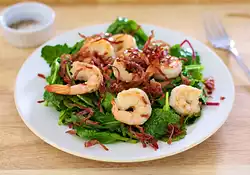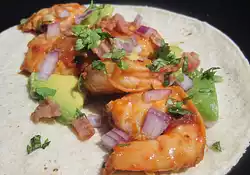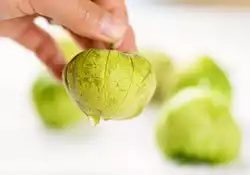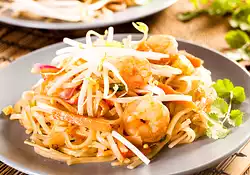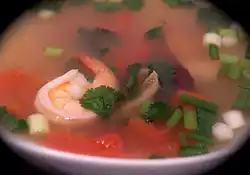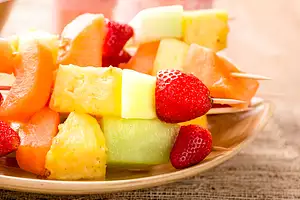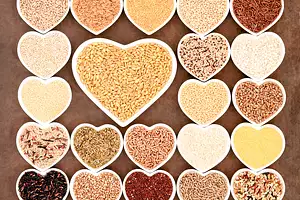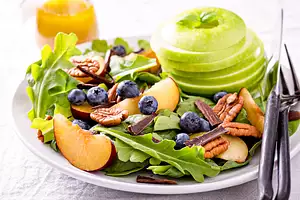Shrimp
About the ingredient shrimp. Including 1,229 recipes with shrimp, nutrition data, and where to find it.
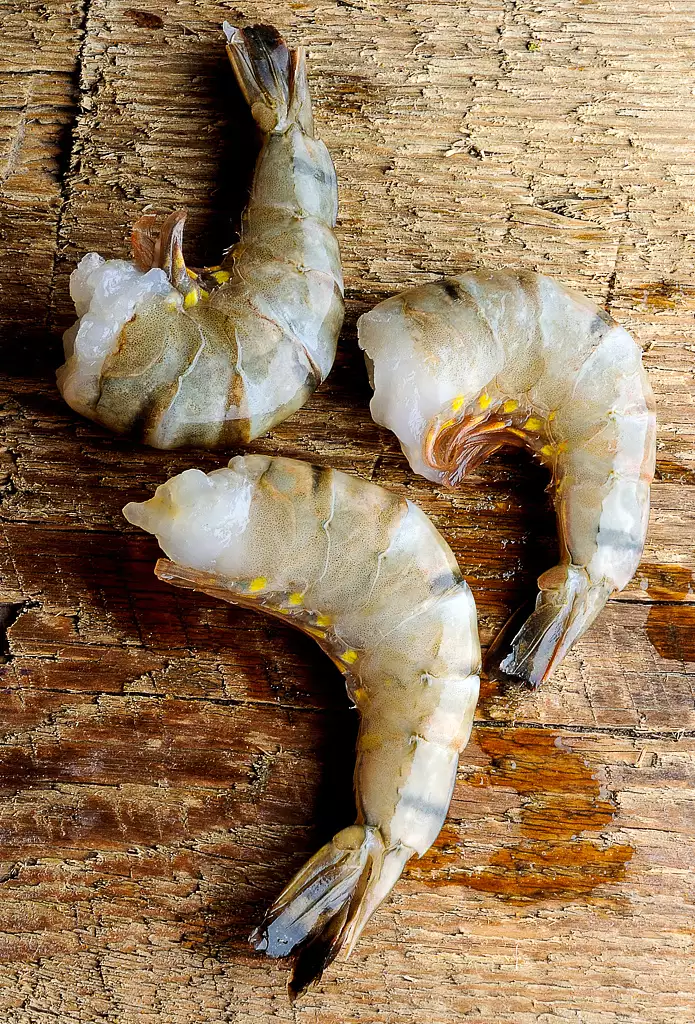
Contents
What is shrimp?
Shrimp is also known as "prawns" in many areas around the world and the terms are used interchangeably.
As with other seafood, shrimp is high in calcium, iodine and protein but low in food energy. A shrimp-based meal is also a significant source of cholesterol, from 122 mg to 251 mg per 100 g of shrimp, depending on the method of preparation. Shrimp consumption, however, is considered healthy for the circulatory system because the lack of significant levels of saturated fat in shrimp means that the high cholesterol content in shrimp actually improves the ratio of LDL to HDL cholesterol and lowers triglyceride.
Preparing shrimp for consumption usually involves removing the head, shell, tail, and "sand vein".
To de-shell a shrimp, the tail is held while gently removing the shell around the body. The tail can be detached completely at this point, or left attached for presentation purposes.
Removing the "vein" can be referred to as "deveining", though in fact shrimp do not have any real veins; they have an open circulatory system.
The "vein" can be removed by making a shallow cut lengthwise down the outer curve of the shrimp's body, allowing the dark ribbon-like digestive tract to be removed with a pointed utensil.
Alternatively, if the tail has been detached, the vein can be pinched at the tail end and pulled out completely with the fingers. The shrimp is then rinsed under cold running water.
Nutrition
Nutrition Facts
Serving Size 3 oz (85g)Where found
Shrimp is usually found in the seafood section or aisle of the grocery store or supermarket.
Food group
Shrimp is a member of the Finfish and Shellfish Products US Department of Agriculture nutritional food group.
How much does shrimp weigh?
| Amount | Weight |
|---|---|
| 3 ounce | 85 grams |
| 4 large | 22 grams |
Related
Finfish and Shellfish Products
| In Chinese: | 虾 | |
| British (UK) term: | prawns | |
| en français: | crevette | |
| en español: | camarón |
Recipes using shrimp
There are 1229 recipes that contain this ingredient.
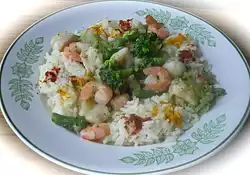
Shrimp & Fish with Green Vegetables in Orange Sauce
delicate, a bit spicy dish inspired by Asian cuisine, and stir-fried in my favorite old wok..

Pumpkin & Coconut Cream Soup
Pumpkin and Coconut Cream Soup recipe
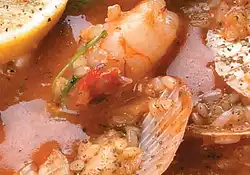
Paella with Shellfish & Lemon Aspen Fruits
Paella with shellfish and served with lemon aspen fruits
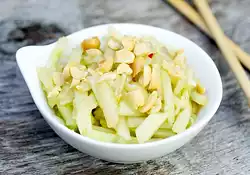
Thai Cucumber Salad
A quick yet refreshing Thai cucumber salad accompanies well with most of your summer Barbecue dishes.

King Prawn Butterfly
This is a delicious starter from my book named 'The Curry Crunch' where mildly spiced king prawns are coated with bread crumbs and fried. The king prawns used in this recipe weigh approximately 50g each.
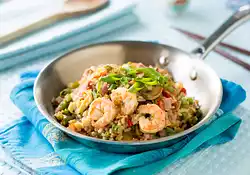
Down-Home Fried Rice
A main dish fried rice packed with plump shrimp, smoky ham with a touch of Asian flare.
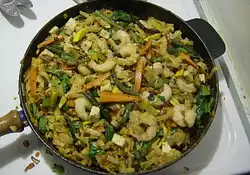
Pad Thai Pseudo
Pad Thai Pseudo recipe
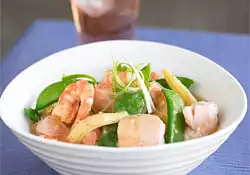
Seafood in Coconut, Ginger & Lemongrass Sauce
A delightful gourmet recipe brought to you by Real Food Direct
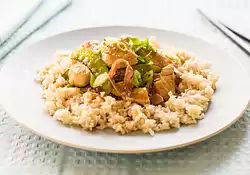
Shrimp (Chicken) & Sugar Snap Pea Stir Fry
An easy dish that's also very tasty. Quick and easy to make, perfect dinner on a busy week day.
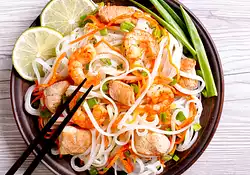
Pad Thai Stir-Fried Rice Ribbon Noodles
Pad Thai Stir-Fried Rice Ribbon Noodles recipe
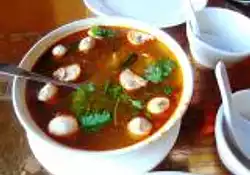
Tom Yum Goong - Savouring Southeast Asia
Lemongrass soup with shrimp.

Phat Thai (Pad Thai)
Phat Thai (Pad Thai) recipe
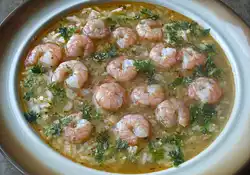
Shrimp & Lentil Soup
a bit spicy soup.. I found a combination of lentil and shrimp in Sri Lanka's cuisine, however I never found any recipe, and I tried my way..
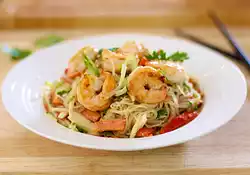
Thai Pasta & Seafood Salad
Delicious and refreshing.
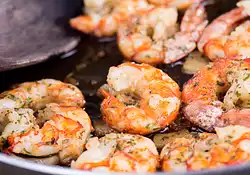
Shrimp Scampi Bake
Shrimp baked in butter, garlic, lemon, parsley with dijon mustard. Classic.

Cullen Skink with King Prawns
A traditional Scottish soup made with smoked haddock and King Prawns. A Delicious winter warmer.

Sauteed Shrimp with Grits
This rib-sticking dish was given to me by a Southern relation.

Crockpot Jambalaya
Jambalaya for your slow cooker.
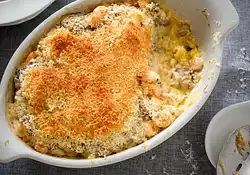
Spaghetti Squash with Mushrooms & Shrimp
This versatile recipe features tender shrimp and a rich mushroom sauce poured over a bed of seasoned spaghetti squash, all topped with a crispy breadcrumb topping. Easy to make and endlessly adaptable, this dish is perfect for a busy weeknight dinner or a special occasion.
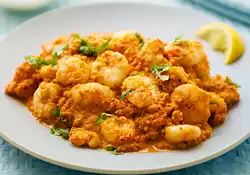
Spicy Sauteed Shrimp
Easy and low-fat shrimp sauté in a sweet pepper sauce with a spicy finish.
